By Greg Tylka
Plant-parasitic nematodes that feed on corn are relatively common in Iowa fields. One or more species of these nematodes were found in 92 percent of samples submitted to the Iowa State University Plant and Insect Diagnostic Clinic from 2000-2010 (see ICM News article here).
The presence of nematodes feeding on corn in fields does not mean that damage and yield loss are occurring. From 2000 to 2010, 92 percent of samples analyzed by Iowa State had at least one species of plant-parasitic nematodes that feed on corn, but only 15 percent of overall samples had nematode population densities (numbers) considered to be possibly damaging to corn.
This article explains the “why” and “how” of sampling corn fields to determine if nematodes are causing damage and likely to reduce corn yields.
Symptoms of nematode damage to corn
Only fields showing symptoms of damage need be sampled. There is no need to samples fields in which corn is not showing symptoms. The symptoms are relatively non-descript and include:
- swollen roots
- death of root tips (see Figure 1)
- dark areas (necrotic lesions) on roots (see Figure 1)
- stunted roots and/or shoots (see Figure 2)
- yellow foliage (see Figure 2)
- mid-day wilting or curling of leaves
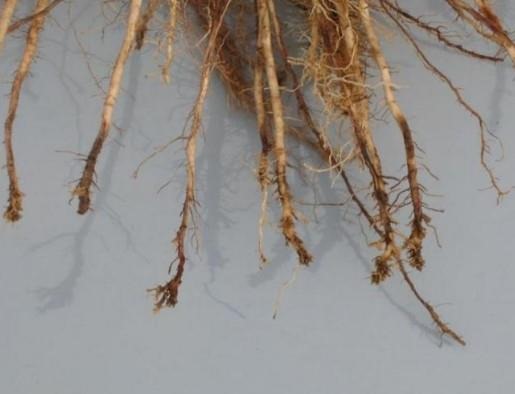 Figure 1. Discolored and stunted corn roots heavily infected with the root-lesion nematode, Pratylenchus spp. Image used with permission, courtesy of Tamra Jackson-Ziems, University of Nebraska
Figure 1. Discolored and stunted corn roots heavily infected with the root-lesion nematode, Pratylenchus spp. Image used with permission, courtesy of Tamra Jackson-Ziems, University of Nebraska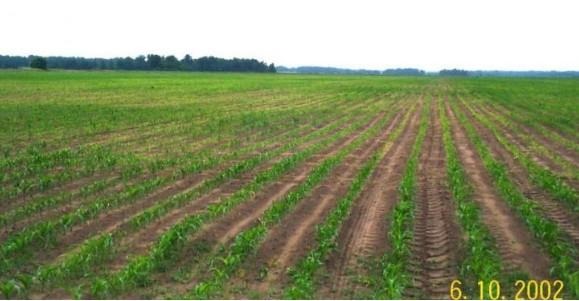 Figure 2. Stunting and foliar yellowing caused by nematode feeding on corn. Image used with permission, courtesy of Tom Hillyer, Hillyer Agriservices.
Figure 2. Stunting and foliar yellowing caused by nematode feeding on corn. Image used with permission, courtesy of Tom Hillyer, Hillyer Agriservices.How and what to sample
Up to the V6 stage of corn growth, soil and roots should be collected to assess the potential field yield loss from nematode feeding on corn. From V6 to the R3 or milk growth stage, only soil samples are needed. Once the corn crop reaches the R4 or dough stage, nematode population densities are not consistently related the potential for yield loss and consequently sampling is not recommended.
For corn up to growth stage V6: collect soil and root samples
- Using a soil probe, angle underneath corn plants to collect 20 or more soil cores that are at least 12 inches long from an area exhibiting symptoms.
- Collect soil cores from within the root zone of plants with symptoms of damage (see Figure 3). Combine (but do not mix) soil cores and place them in a sealed plastic bag labeled with permanent marker.
- Also collect, with a shovel, the root mass from 4 to 6 plants showing symptoms of damage (see Figure 4). Be careful not to strip off the smaller, seminal roots. The tops of plants can be cut off and discarded. Place the roots in a sealed plastic bag labeled with permanent marker.
- Protect soil and root samples from physical jarring, and keep samples at or below room temperature.
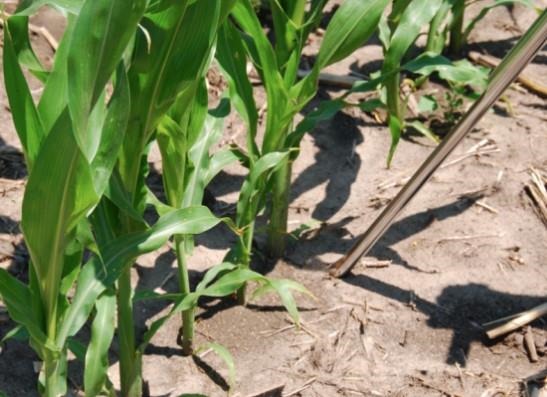 Figure 3. Collecting a soil core from underneath a corn plant to determine the presence and number of plant-parasitic nematodes. A good sample consists of cores taken from 20 or more plants showing symptoms of nematode damage.
Figure 3. Collecting a soil core from underneath a corn plant to determine the presence and number of plant-parasitic nematodes. A good sample consists of cores taken from 20 or more plants showing symptoms of nematode damage.
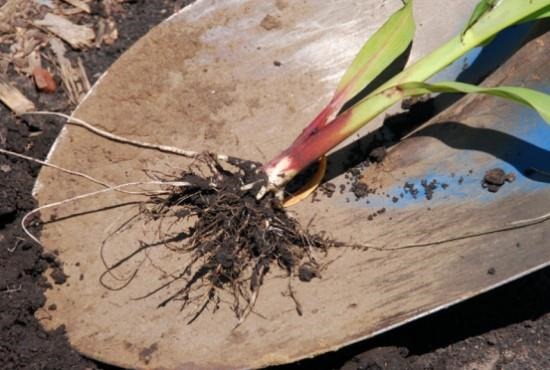 Figure 4. Young corn plant collected to determine the presence and number of plant-parasitic nematodes in the root tissue. A good sample consists of four or six plants at V6 or younger that are showing symptoms of nematode damage.
Figure 4. Young corn plant collected to determine the presence and number of plant-parasitic nematodes in the root tissue. A good sample consists of four or six plants at V6 or younger that are showing symptoms of nematode damage.For corn from growth stage V6 through R3: collect only soil samples, no roots
- Use a soil probe, angle underneath corn plants to collect 20 or more soil cores that are at least 12 inches long from an area exhibiting symptoms.
- Collect the soil cores from within the root zone of plants showing symptoms of damage (Figure 3).
- Combine (but do not mix) soil cores and place them in a sealed plastic bag labeled with permanent marker.
- Protect the soil samples from physical jarring, and keep samples at or below room temperature.
Where to send samples?
Samples for nematode analysis can be sent to some private soil-test laboratories in Iowa and surrounding states. Check with the private labs to determine if they process nematode samples for corn before sending the samples. Many university plant disease clinics and nematode diagnostic labs also process samples for nematodes on corn. A list of the university laboratories and their contact information is available online here.
The Iowa State University Plant and Insect Diagnostic Clinic processes samples for nematodes that feed on corn. The test is called a complete nematode count. Samples sent to the ISU Clinic should be accompanied by a Nematode Sample Submission Form (ISU Extension Publication "PIDC 32", found online here). The submission form has instructions on where to submit the samples. There is a $35 per sample processing fee ($40 per sample for out-of-state samples).
Damage thresholds
The number of nematodes necessary to damage corn varies greatly among the nematode species, and the potential for yield loss can only be gauged by determining the types and numbers of nematodes present in a field.
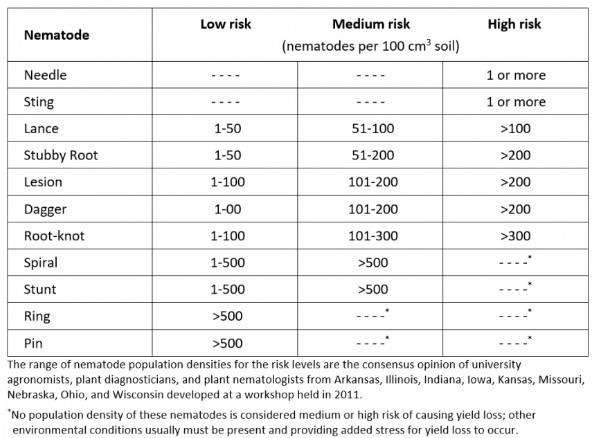 Table 1. Nematode population densities corresponding to three risk categories for damage and yield loss based on root and soil samples collected from planting through corn growth stage R3.
Table 1. Nematode population densities corresponding to three risk categories for damage and yield loss based on root and soil samples collected from planting through corn growth stage R3.Managing nematode damage on corn
If damaging population densities of nematodes are found in a corn field, there is nothing that can be done during the season to slow the build-up of nematode numbers and lessen the yield loss. However, information on which nematodes are present in the field will be useful in planning to manage the pests in the future. Management options for future corn crops include using soil-applied Counter® 20G nematicide and/or seed treatments such as Aveo™, Avicta®, Lumialza™, Nemasect™, Trunemco™, and Votivo®.
Source : iastate.edu